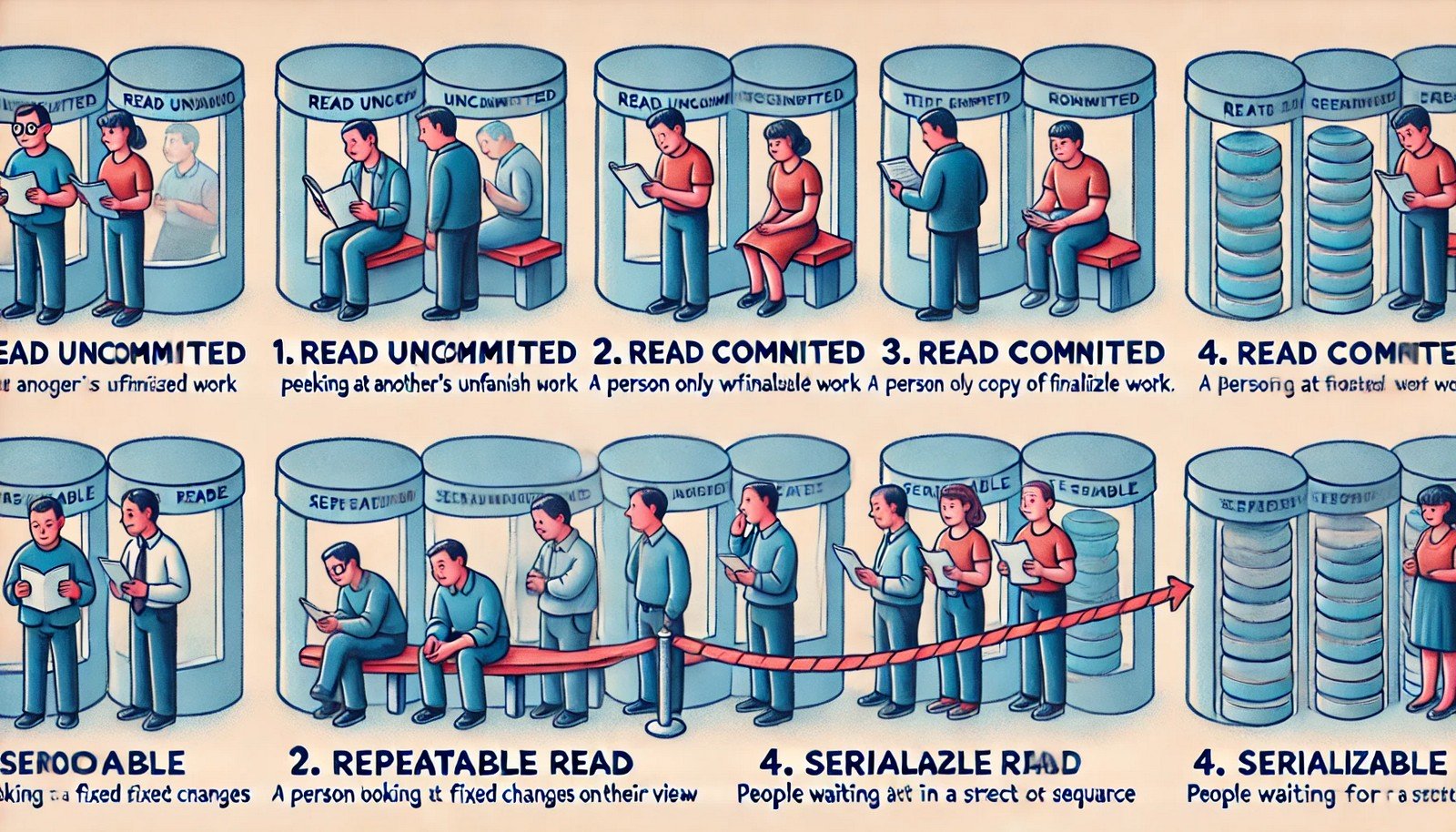Transaction Isolation Levels
 (Representational Image | Source: Dall-E)
(Representational Image | Source: Dall-E)
Quick Navigation:
- Transaction Isolation Levels Definition
- Transaction Isolation Levels Explained Easy
- Transaction Isolation Levels Origin
- Transaction Isolation Levels Etymology
- Transaction Isolation Levels Usage Trends
- Transaction Isolation Levels Usage
- Transaction Isolation Levels Examples in Context
- Transaction Isolation Levels FAQ
- Transaction Isolation Levels Related Words
Transaction Isolation Levels Definition
Transaction Isolation Levels define the degree to which database transactions are isolated from each other. The four primary levels are Read Uncommitted, Read Committed, Repeatable Read, and Serializable, each offering different tradeoffs between consistency and performance.
Transaction Isolation Levels Explained Easy
Imagine playing a board game. If you see other players' moves before they are finalized, it’s like Read Uncommitted. If you only see finalized moves, that’s Read Committed. If the board remains unchanged for you during your turn, that’s Repeatable Read. If the entire game freezes during your turn, that’s Serializable.
Transaction Isolation Levels Origin
The need for isolation in database transactions arose with multi-user systems to prevent conflicts and inconsistencies. ACID principles, introduced in database management, formalized the different levels of isolation.
Transaction Isolation Levels Etymology
The term "isolation" comes from the idea of keeping database transactions separate to maintain integrity.
Transaction Isolation Levels Usage Trends
Modern applications require flexible isolation settings. Financial systems use strict isolation for accuracy, while web applications prioritize performance with looser isolation levels. Cloud databases also adapt isolation dynamically.
Transaction Isolation Levels Usage
- Formal/Technical Tagging:
- Database Management Systems
- SQL Transactions
- Concurrency Control - Typical Collocations:
- "Serializable isolation level"
- "Dirty reads prevention"
- "Optimizing transaction consistency"
- "Concurrency control mechanisms"
Transaction Isolation Levels Examples in Context
- A banking system uses **Serializable** to prevent overdrafts from concurrent withdrawals.
- An e-commerce site uses **Read Committed** to ensure customers see only finalized transactions.
- A ride-sharing app applies **Repeatable Read** to prevent duplicate bookings.
Transaction Isolation Levels FAQ
- What is the purpose of transaction isolation levels?
They balance consistency and performance in concurrent database transactions. - Why is Read Uncommitted rarely used?
It allows dirty reads, leading to potential inconsistencies. - How does Repeatable Read differ from Serializable?
Repeatable Read prevents changes to read data but allows new rows; Serializable prevents both. - What isolation level does MySQL use by default?
MySQL defaults to **Repeatable Read**. - Which isolation level is best for financial transactions?
**Serializable**, ensuring strict consistency. - Can transaction isolation levels affect performance?
Yes, stricter isolation reduces concurrency but increases accuracy. - How do isolation levels prevent data anomalies?
They prevent dirty reads, non-repeatable reads, and phantom reads. - Can isolation levels be changed dynamically?
Yes, most databases allow setting isolation per transaction. - What is the default isolation level in SQL Server?
SQL Server defaults to **Read Committed**. - How does isolation relate to ACID properties?
Isolation is one of the four ACID properties ensuring reliable transactions.
Transaction Isolation Levels Related Words
- Categories/Topics:
- Database Management
- SQL Transactions
- Concurrency Control
Did you know?
The ANSI SQL standard defines four isolation levels to standardize behavior across database systems, ensuring consistent transactional execution.
PicDictionary.com is an online dictionary in pictures. If you have questions or suggestions, please reach out to us on WhatsApp or Twitter.Authors | Arjun Vishnu | @ArjunAndVishnu

I am Vishnu. I like AI, Linux, Single Board Computers, and Cloud Computing. I create the web & video content, and I also write for popular websites.
My younger brother, Arjun handles image & video editing. Together, we run a YouTube Channel that's focused on reviewing gadgets and explaining technology.



Comments powered by CComment